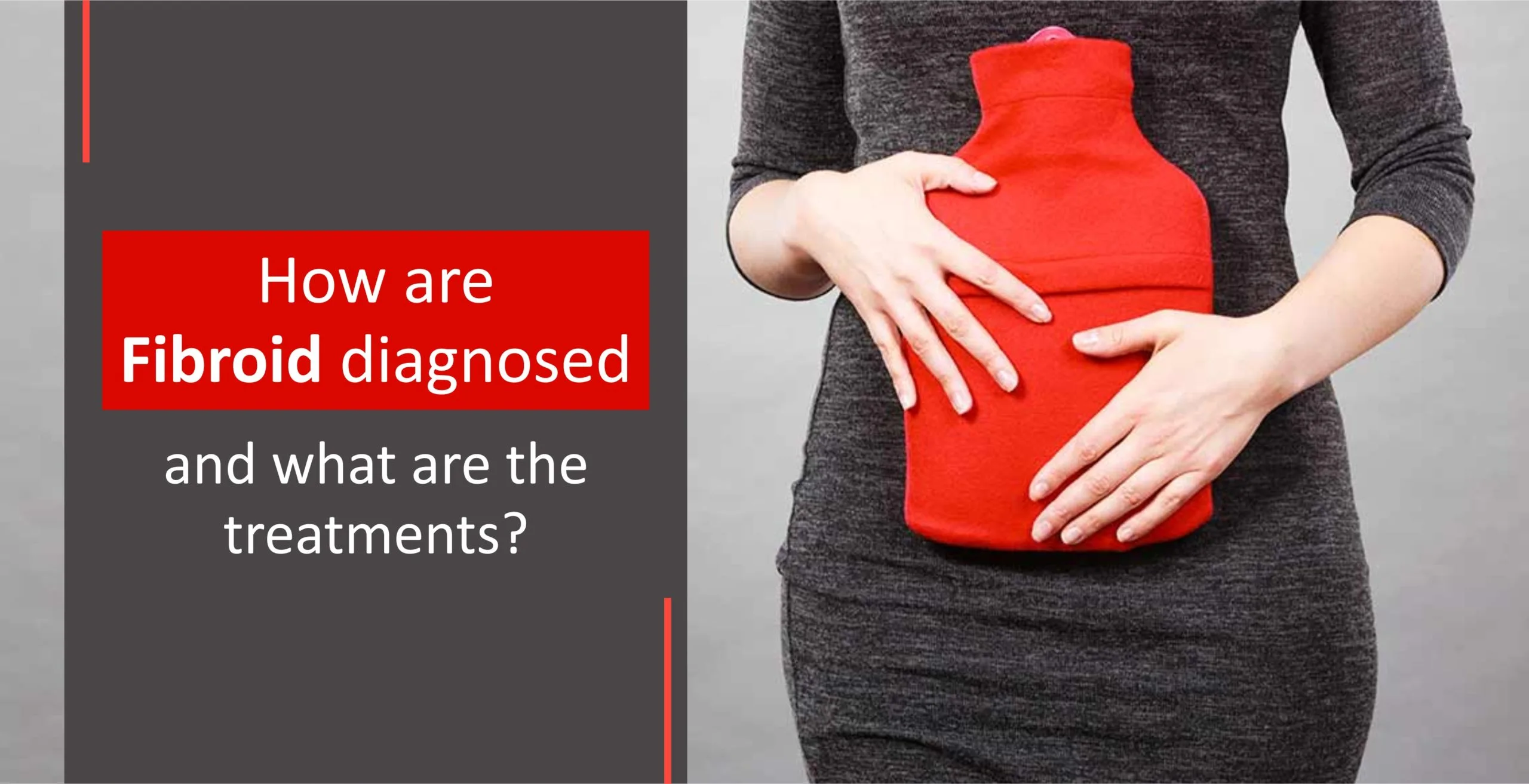How are Fibroids Diagnosed and What are the Treatments?
Summary: Uterine fibroids are benign growths in the uterus that can cause symptoms like heavy bleeding, pelvic discomfort, and frequent urination. Diagnosing fibroids involves imaging tests such as ultrasounds and MRIs, along with a physical exam. Treatment options range from medications and non-invasive procedures to surgical interventions like myomectomy or hysterectomy, depending on the severity. In some cases, natural remedies like diet changes, herbal supplements, and stress management can also help manage symptoms.
Overview
Uterine Fibroids, also known as uterine leiomyomas, are non-cancerous growths that develop in or on the uterus. Affecting women of reproductive age, fibroids can vary in size, location, and severity. While many women with fibroids may not experience any symptoms, others may suffer from heavy bleeding, pelvic pain, and other complications. Understanding how fibroids are diagnosed and the available treatment options is important for women who are impacted by this condition.
In this blog, one of the leading gynaecologists in Gurgaon at Miracles Apollo Cradle provides insight into the various diagnostic methods, treatment options, and natural remedies available for fibroids.
What Are Fibroids in the Uterus?
Uterine fibroids are a common condition affecting women, with studies suggesting that up to 70-80% of women will develop fibroids by the age of 50. Fibroids are made of muscle and fibrous tissue and can range from tiny seed-sized growths to large masses that can distort the shape of the uterus. The exact cause of fibroids is still not entirely understood, though hormonal imbalances, genetics, and environmental factors are believed to play a role.
Although most fibroids do not cause symptoms, some can lead to significant symptoms, including:
-
Heavy menstrual bleeding
-
Pain during intercourse
-
Pelvic pain or pressure
-
Frequent urination
-
Constipation
Fibroids Diagnosis
Diagnosing fibroids involves a combination of medical history review, physical examinations, and imaging tests. If you experience symptoms like heavy menstrual bleeding, pelvic pain, or frequent urination, consult a gynae near you.
Common Methods for Diagnosing Fibroids:
1. Pelvic Examination:
A physical exam can sometimes detect large fibroids if they cause the uterus to enlarge. Your doctor may perform a pelvic exam to feel for any abnormal growths or changes in the size or shape of your uterus.
2. Ultrasound:
An ultrasound is the most common and non-invasive imaging test used to detect fibroids.It utilizes sound waves to produce images of the uterus, helping to assess the size, location, and number of fibroids.
3. Magnetic Resonance Imaging (MRI):
An MRI can provide detailed images of the uterus and help identify fibroids that may be difficult to detect with an ultrasound. It can also help your doctor plan treatment, especially if surgery is required.
4. Hysteroscopy:
In some cases, a doctor may use a thin, flexible tube with a camera (hysteroscope) inserted into the uterus through the cervix to examine the uterine lining and detect submucosal fibroids.
5. Sonohysterography:
This procedure involves injecting a saline solution into the uterus during an ultrasound to create clearer images, which is particularly useful in diagnosing submucosal fibroids.
6. CT Scan:
A CT scan may be used less frequently, but it can help provide a more detailed view of fibroids if necessary.
The diagnostic method used will depend on the symptoms, the size of the fibroids, and your gynae doctor’s recommendations.
Can Fibroids Be Treated Without Surgery?
Not all women with fibroids require surgery, as many fibroids do not cause significant symptoms and may not need any treatment. For those with mild to moderate symptoms, non-surgical treatments can effectively manage the condition.
How to Cure Fibroids Naturally?
While there is no guaranteed natural cure for fibroids, certain lifestyle changes and natural treatments can help manage symptoms and reduce fibroid growth. Here are some tips for managing fibroids naturally:
1. Diet:
A healthy diet rich in fruits, vegetables, and whole grains can help balance hormone levels and reduce inflammation, which may help in managing fibroids. Foods high in fiber and low in refined sugars and fats may be particularly beneficial.
- Herbal Remedies: Some herbal supplements like green tea extract, chasteberry, and turmeric have been thought to have anti-inflammatory properties and may help manage fibroid symptoms.
2. Exercise:
Regular physical activity can help reduce excess estrogen levels, which may promote fibroid growth. Try to incorporate at least 30 minutes of moderate exercise into your routine on most days of the week.
3. Stress Reduction:
Chronic stress can lead to hormonal imbalances, which may exacerbate fibroid symptoms. Mindfulness techniques, yoga, and meditation can help manage stress levels.
Before attempting any natural remedies, it is important to consult with your doctor to ensure they are safe and effective for your situation.
Fibroids Treatment
Treatment for fibroids depends on the severity of the symptoms, the size and location of the fibroids, and the woman’s overall health and fertility goals. There are several treatment options available for fibroids, ranging from medication to surgical interventions.
1. Medications
-
Hormonal Therapy: Hormonal IUDs, or hormone therapy can help control bleeding and reduce fibroid symptoms by regulating estrogen and progesterone levels.
-
Gonadotropin-Releasing Hormone (GnRH) Agonists: These medications temporarily shrink fibroids by lowering hormone levels and inducing a temporary menopause-like state. They are typically used for short periods before surgery.
-
Tranexamic Acid: A medication that helps reduce heavy menstrual bleeding.
-
Non-Steroidal Anti-Inflammatory Drugs (NSAIDs): Pain relief medications like ibuprofen can help manage mild to moderate pain associated with fibroids.
2. Non-Surgical Procedures
-
Uterine Artery Embolization (UAE): This minimally invasive procedure involves blocking the blood vessels supplying the fibroids, which causes them to shrink.
-
MRI-guided Focused Ultrasound (MRgFUS): A non-invasive treatment that uses high-frequency sound waves to destroy fibroid tissue.
These options can provide relief for many women without the need for surgery, though they may not always be a permanent solution.
3. Surgical Options
In more severe cases where fibroids cause significant discomfort or complications, surgery may be necessary. Surgical options include:
-
Myomectomy: This is a procedure where the fibroids are removed, leaving the uterus intact. It is usually recommended for women who wish to preserve fertility.
-
Hysterectomy: In this procedure, the uterus is removed entirely. A hysterectomy is typically recommended for women who no longer wish to have children or when fibroids are causing serious health issues.
-
Endometrial Ablation: In cases where fibroids are causing heavy bleeding, this procedure can be performed to remove or destroy the lining of the uterus, reducing bleeding.
Can Fibroids Affect Pregnancy?
Fibroids can have an impact on pregnancy, although most women with fibroids can carry a pregnancy to term without complications. However, certain types and locations of fibroids may cause issues.
Potential Risks of Fibroids During Pregnancy:
-
Miscarriage: Large fibroids or fibroids located in the uterine cavity can increase the risk of miscarriage, particularly in the early stages of pregnancy.
-
Preterm Labor: In rare cases, fibroids may cause preterm labor, especially if they are large and located near the cervix.
-
Obstructed Labor: If fibroids are large enough, they can block the birth canal and make vaginal delivery difficult.
-
Placenta Issues: Some fibroids, especially submucosal ones, can interfere with the implantation of the placenta, leading to complications such as placental abruption or placenta previa.
While these risks are real, they are relatively uncommon. Many females with fibroids have healthy pregnancies and deliver healthy babies. Regular monitoring by a healthcare provider can help manage any potential complications.
How to Deal with Fibroids During Pregnancy?
If you are pregnant and have fibroids, it’s important to work closely with your healthcare provider to manage the condition. Here are some strategies to deal with fibroids during pregnancy:
-
Regular Monitoring: Your doctor will likely monitor the size and position of your fibroids through ultrasounds to detect any changes that might affect your pregnancy.
-
Pain Management: If fibroids cause discomfort, your doctor may recommend safe pain management options during pregnancy, such as acetaminophen or heat therapy.
-
Avoiding Stress: Stress can worsen fibroid symptoms, so engaging in relaxation techniques can help minimize discomfort.
-
Planning for Delivery: If your fibroids are large or in a position that may affect delivery, your doctor will discuss options for a safe birth, including a potential cesarean section.
Fibroids during pregnancy generally require careful monitoring, but most women can have healthy pregnancies with proper care.
Conclusion:
Uterine fibroids are common but manageable. Early diagnosis and treatment are essential to minimizing symptoms and ensuring that women with fibroids can lead healthy, active lives. Whether through non-surgical methods, lifestyle changes, or surgical procedures, there are numerous options to address fibroids effectively. If you are pregnant or planning to become pregnant, be sure to consult your gynaecologist to understand how fibroids may affect your pregnancy and the best ways to manage them.
If you are experiencing symptoms or need more information on fibroid treatment, schedule an appointment with the best gynaeologist near you at Miracles Healthcare for comprehensive care for fibroids and related conditions.
Frequently Asked Questions
Fibroids are usually non-cancerous and often don't pose a serious health threat, but they can cause symptoms like heavy bleeding and pain.
Fibroids develop from the muscle tissue in the uterus, and their exact cause is unclear, but hormonal imbalances and genetics may play a role.
Fibroids can be dangerous if they cause severe symptoms like excessive bleeding, pressure on organs, or complications during pregnancy.
Fibroids are common in women of reproductive age, especially those between 30 and 40.
Fibroids may shrink on their own after menopause due to reduced hormone levels, but they typically do not go away completely without treatment.









.webp)





Was the information useful?
0 0